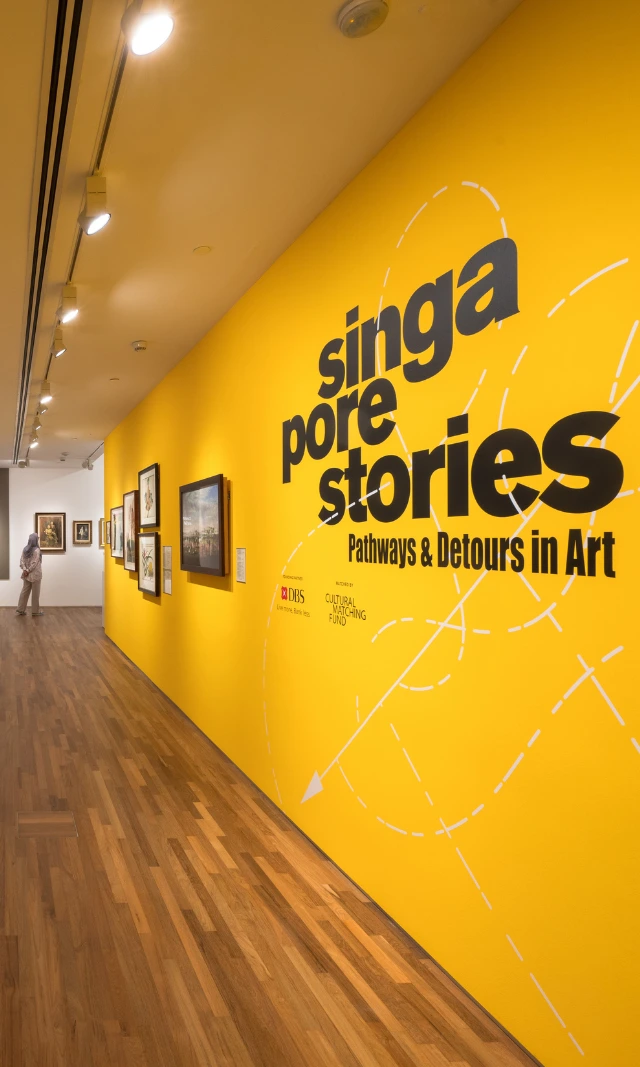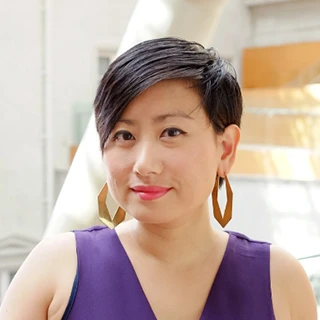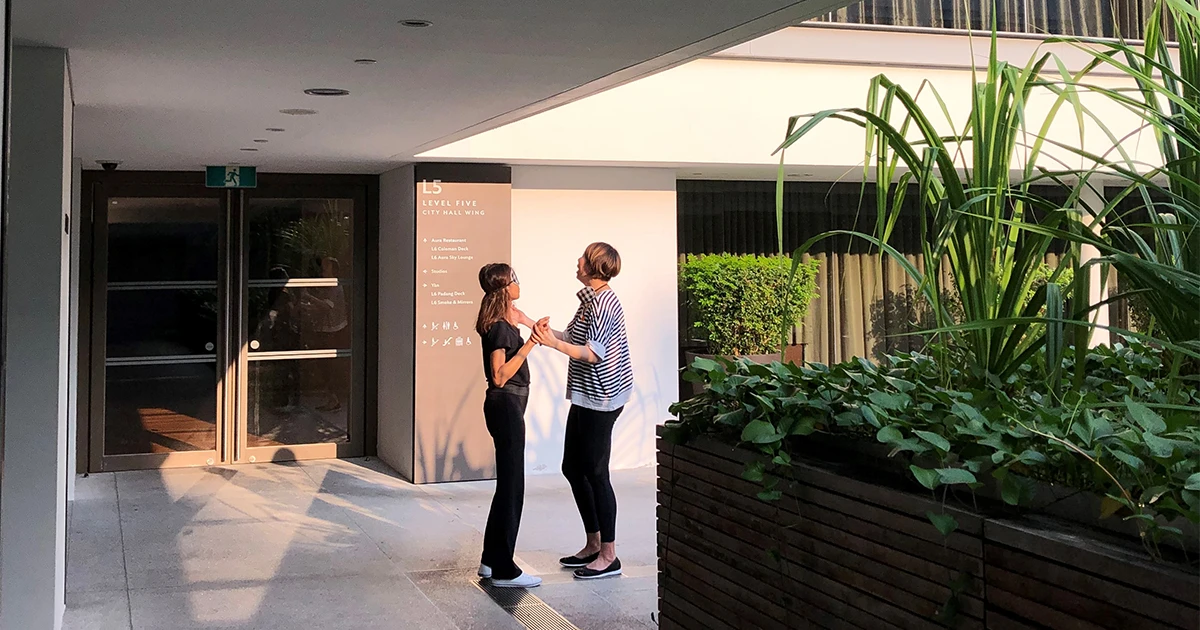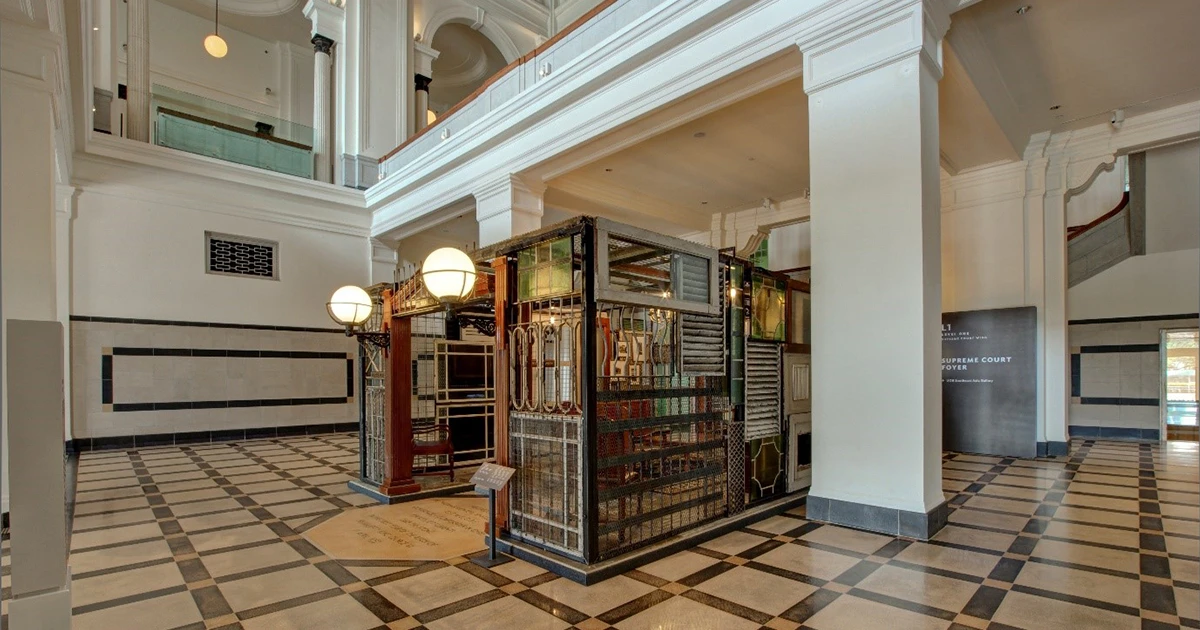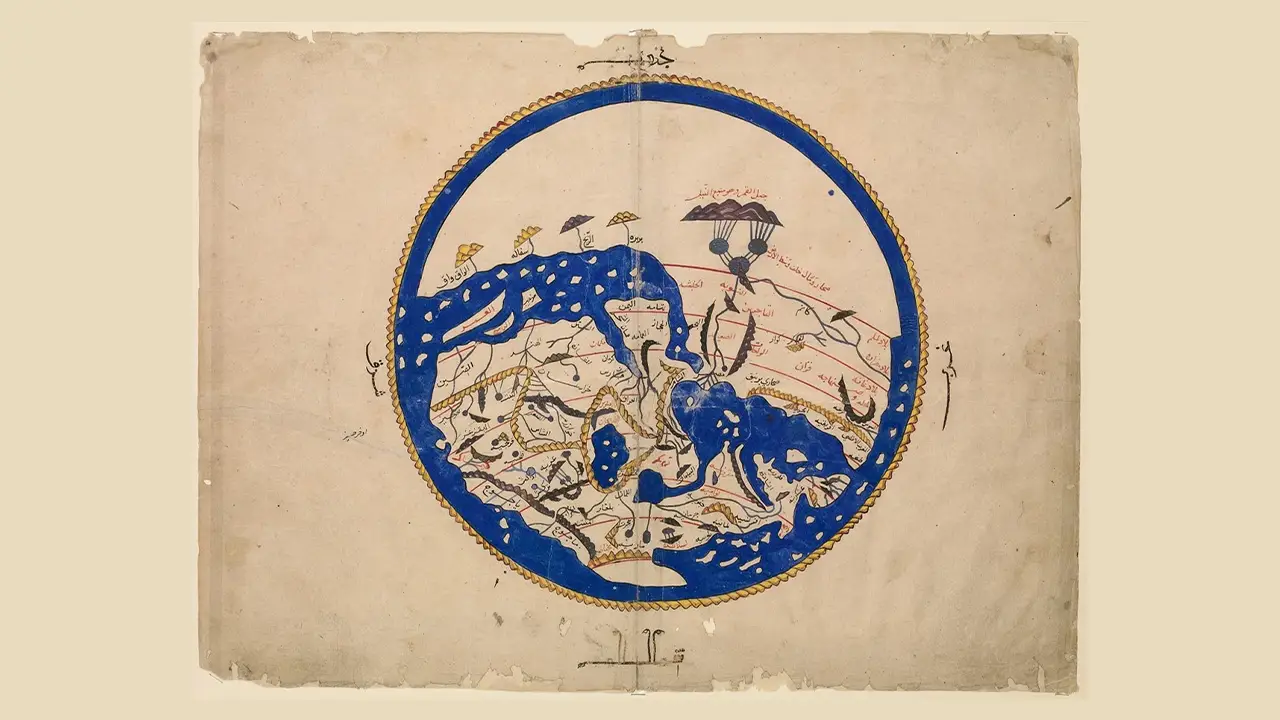Ask a Curator | Ng Teng Fong Roof Garden Commission: Charles Lim Yi Yong, SEA STATE 9: proclamation garden
We’ve been receiving a flurry of questions about this unique installation at the Ng Teng Fong Roof Garden Gallery. For the perennially curious (or just kaypoh*!), exhibition curator Adele Tan responds to a few of these queries.
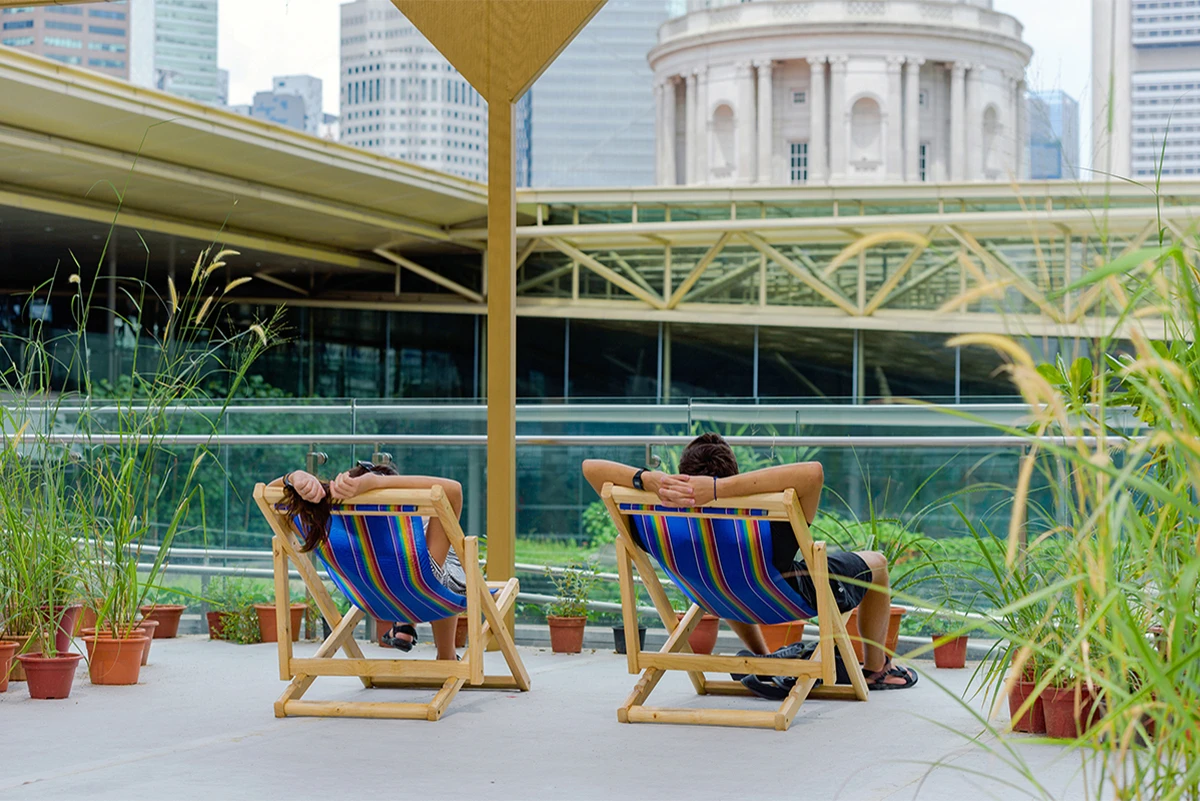
All photographs by Joseph Nair for the National Gallery Singapore ©
We’ve been receiving a flurry of questions about this unique installation at the Ng Teng Fong Roof Garden Gallery. For the perennially curious (or just kaypoh*!), exhibition curator Adele Tan responds to a few of these queries.
Can you share more about the title proclamation garden?
This installation builds on Charles’ 2017 exhibition SEA STATE 9: Proclamation and is part of his long-term SEA STATE project initiated in 2005. SEA STATE 9: Proclamation began with Charles’ research into the mechanical, legal and bureaucratic processes or rituals that govern land reclamation in Singapore, by which “new” land comes into being and becomes part of our sovereign landscape. With SEA STATE 9: proclamation garden, Charles turned his attention to the rich diversity of vegetation growing on reclaimed land. We found species previously thought extinct in Singapore at these reclamation sites, and unlikely ones like Phoenix dactylifera or date palms, which probably germinated after site-workers spat out the seeds. Sadly, these plants will eventually be destroyed after the onset of the official proclamation and handover of the land to other agencies.
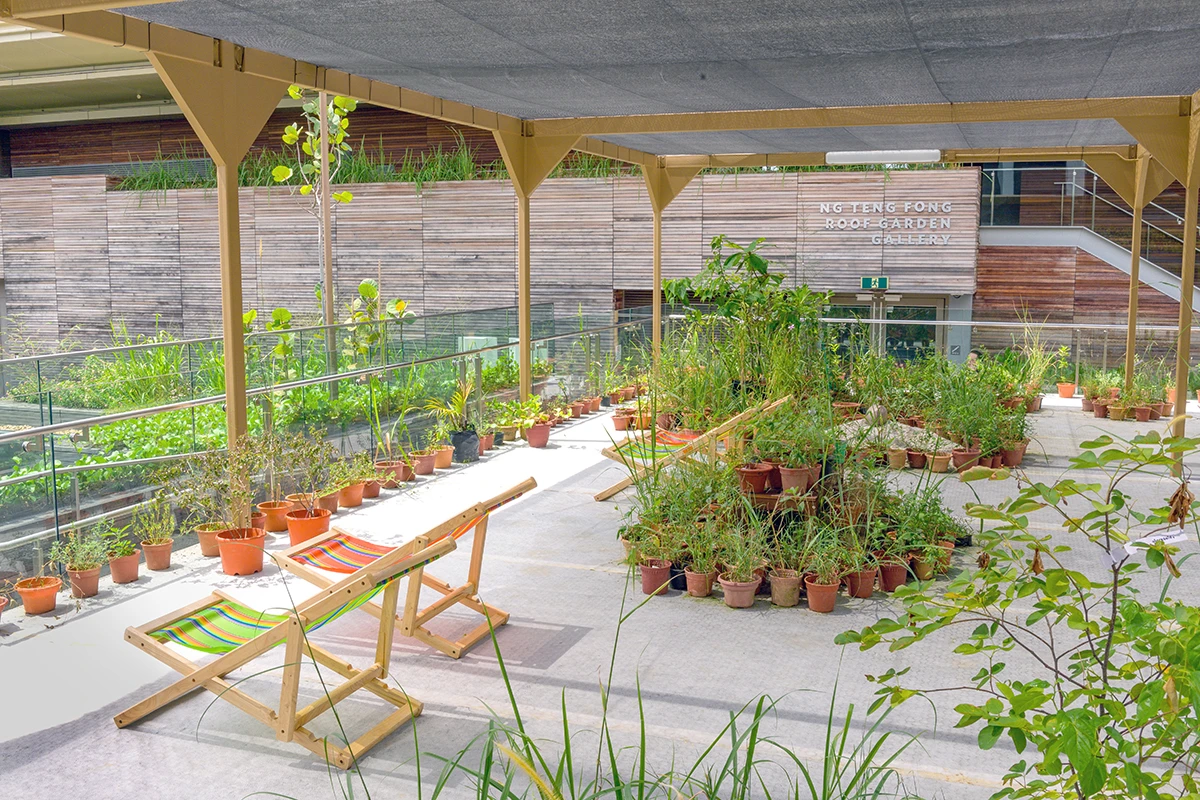
How were the plants in the installation selected?
Charles and I worked with two botanists: Veera Sekaran, founder of Greenology, an urban greening solutions company, and Boo Chih Min, who runs her own consultancy Uvaria Tide.They accompanied us on several field trips to reclamation sites. We found an array of plants from ones growing in rocky and sandy areas, to others that thrive in coastal and mangrove conditions. We identified plants suitable for existing planter boxes and outsized flowerpots in Ng Teng Fong Roof Garden Gallery, and also collected another several hundred plant specimens for the “nursery” on the central deck there; these specimens are meant to replace the plants that die out over the course of the exhibition, or when Charles decides on a different planting schema. Veera and Chih Min helped ensure that the plants selected were viable for the roof garden’s infrastructural specificities and would not jeopardise museum operations and artwork safety.
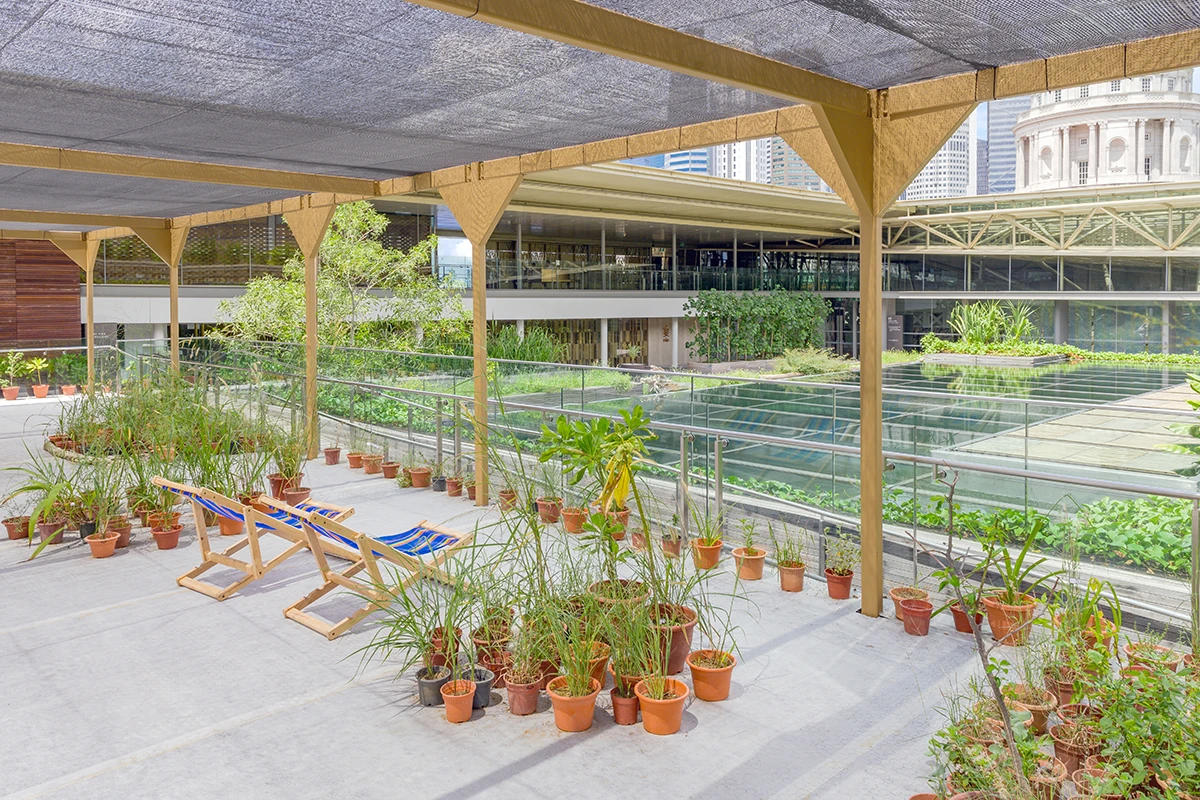
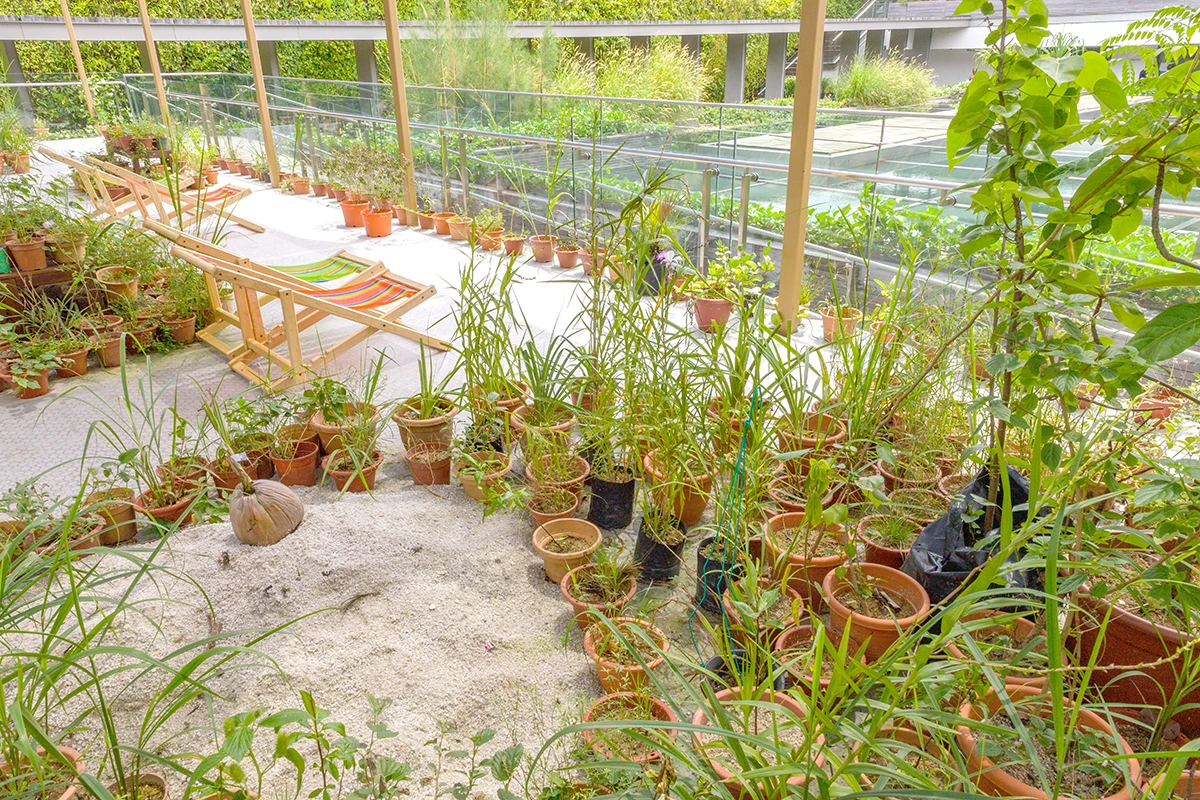
How did you transport these plants from reclaimed areas? How do you maintain this living installation?
With Chih Min’s help, we found a landscaping contractor who had experience with plant collection “expeditions” and was equipped with special tools, systems and the know-how to effectively extract cuttings from the plants on reclamation sites. His team also knew how to resuscitate dying plants after a long trip back to the gallery. Chih Min herself provided expert advice on site; for example, smaller plants have a better chance of survival and plants with tap roots must be dug from deep in the ground so as not to disrupt the root ball. We once mistakenly carted back a well grown Casuarina tree which looked good for a few days but ultimately died.
This same contractor maintains the plants in the “nursery” on the central deck for this exhibition. We also work with the Gallery’s own landscaping contractor who sourced and maintains the plants in the planters and flowerpots. As I highlighted earlier, this is a “living installation” so the artist changes out the plants over the course of the exhibition. The Gallery, artist and contractors work together to monitor the health of the plants and sustain the interest and engagement of visitors.
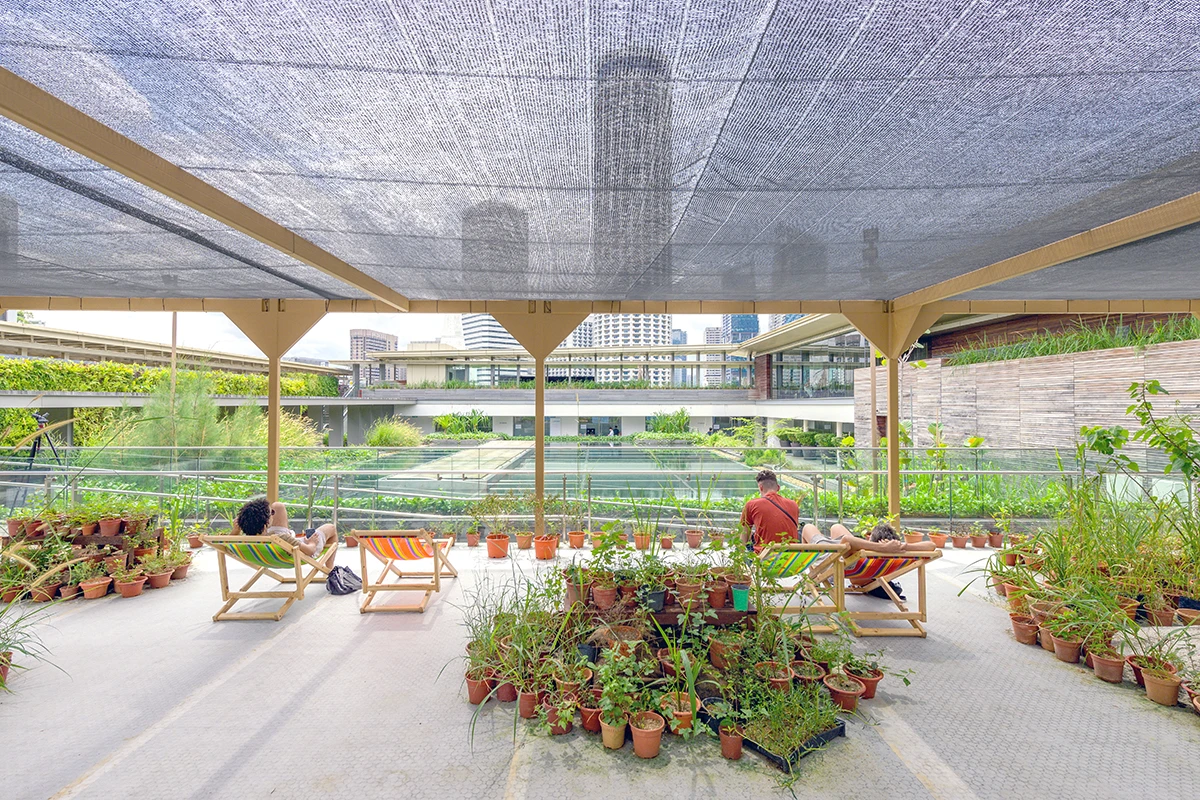
What is the “afterlife” of this work? Will the plants stay permanently on the rooftop after the end of the exhibition? If not, where will they go?
Given the popularity of Charles’ garden with the public and its educational propensity, the Gallery is planning on keeping most of the plants in the planter boxes after the end of the exhibition. Charles is also keen on this, although he does not require the museum to maintain the plants as his artwork. However, some plants will be replaced and other wayward plants cut back with hard pruning, like the ipomoea pes-caprae or sea morning glory, to not compromise the diversity of plant life or damage the facilities. We’ll be working with our botanical consultants again to ensure that we begin with a planting philosophy that is respectful to the artist’s vision, mindful of practicalities at the museum and encourages the transformation of the Ng Teng Fong Roof Garden Gallery into an inclusive social space.
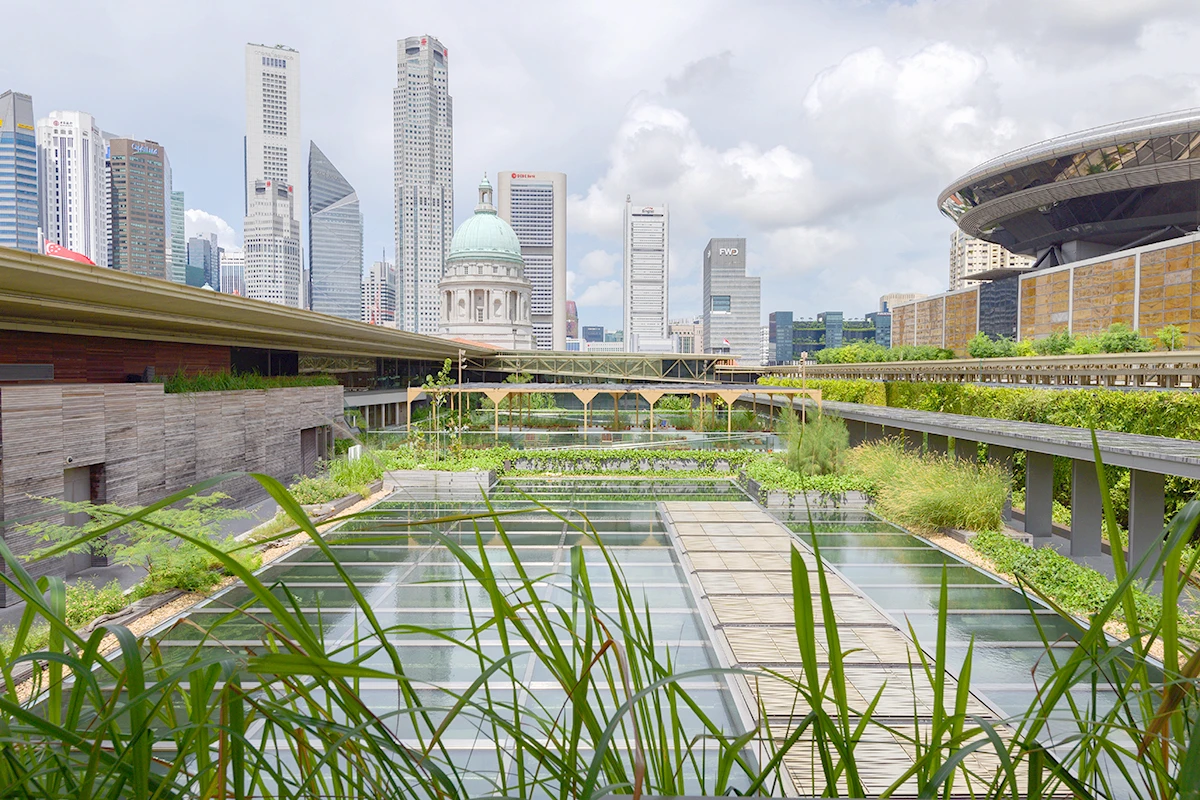
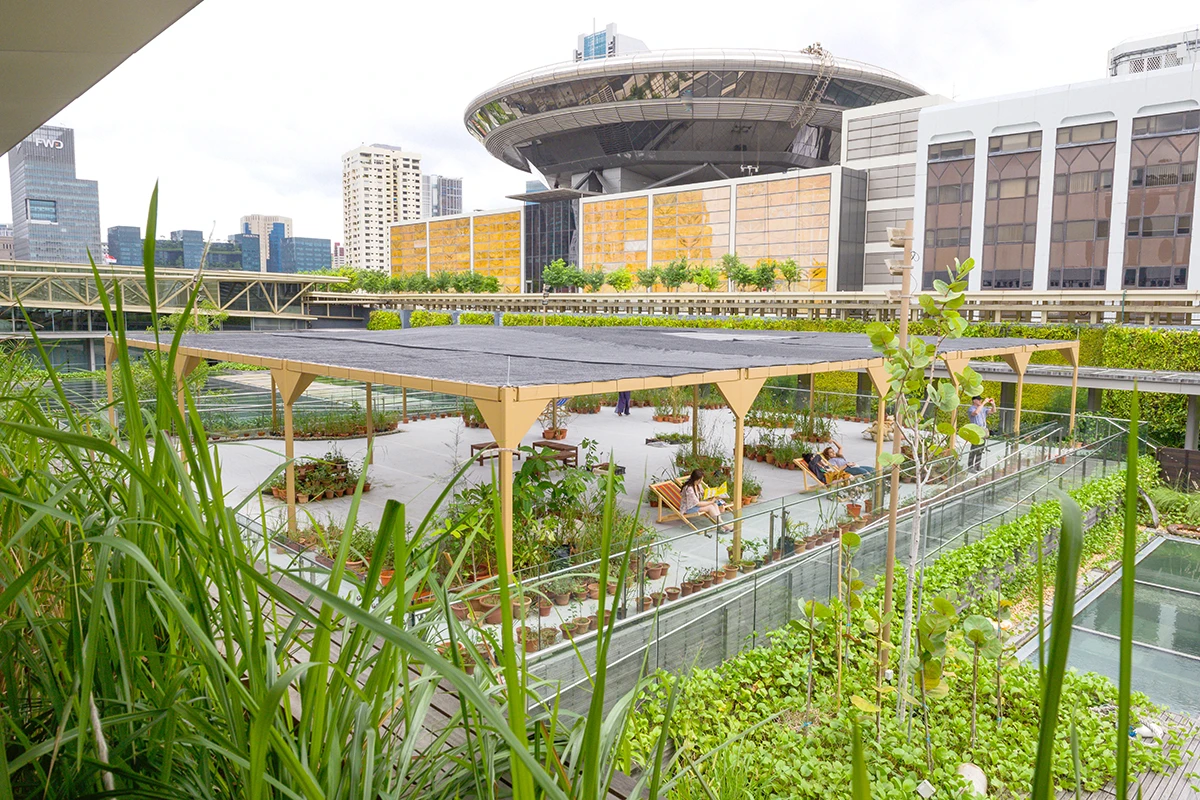
Among the plants in the installation, which is your favourite and why?
This is a tough one to answer as there are so many fascinating aspects and stories to the plants once you start boning up on botanical and folk knowledge. But the star plant for me and Charles has got to be the cassytha filiformis, more commonly known as the Seashore Dodder. The dodder plant has a fearsome reputation as a menacing parasitic plant that sustains itself by forming numerous connective projections into surrounding host plants—from weeds to shrubs and trees—through a mechanism called haustoria. This projection from parasitic plants like the dodder enables it to meet nutritional requirements, dispensing with the need for chlorophyll. This is why the plant is orange. If left to thrive, it can quickly take over, forming a dense, tangled (and even dangling) net of stems and nodes, killing off nearby host plants.
On our field trips to reclamation sites in Tuas, we also encountered a most fascinating phenomena of several long stems banding together such that they resembled ribbon cables used for electronics. Sadly, the dodder is the one plant that has not flourished in our space after transplantation, and we have not been able to witness the destructive potential it is reputed to have. But as we found out, even though all dodder varieties are parasitic, there are certain types of plants that are more susceptible to dodder attachments than others. Some plants are in fact completely immune to dodder attacks. At the same time, given the dodder plant’s adaptability, if it is left undisturbed long enough, it might evolve other survival strategies.
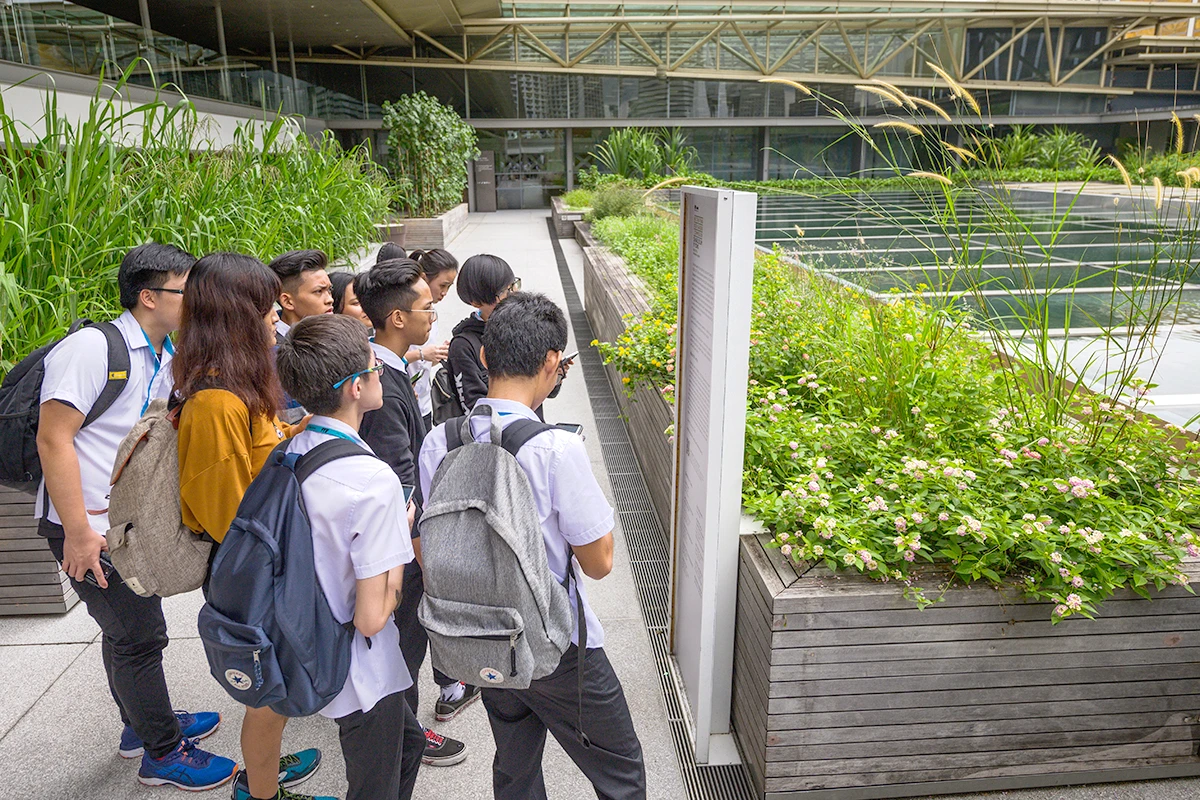
What was the most exciting or surprising aspect about working on this project for you?
I am a gardening enthusiast/“noob” so being able to work with plants was a real bonus for me.
This project has also been dynamic from a curatorial point of view. As a “living” art installation, it is a perpetual work in progress with extensions including the catalogue and podcast so I had to be prepared for surprises, as well as failure and inconvenience. Thankfully some have been pleasant surprises, like finding bees and butterflies or spontaneous growth of edibles. Working with plants, you learn that you cannot always bend nature to your will.
Editor's Note
Dodder over to the Ng Teng Fong Roof Garden Gallery for Charles Lim’s SEA STATE 9: proclamation garden before it closes on 27 October 2019. Click here to find out more.
*Kaypoh is a Singlish term meaning nosy.








